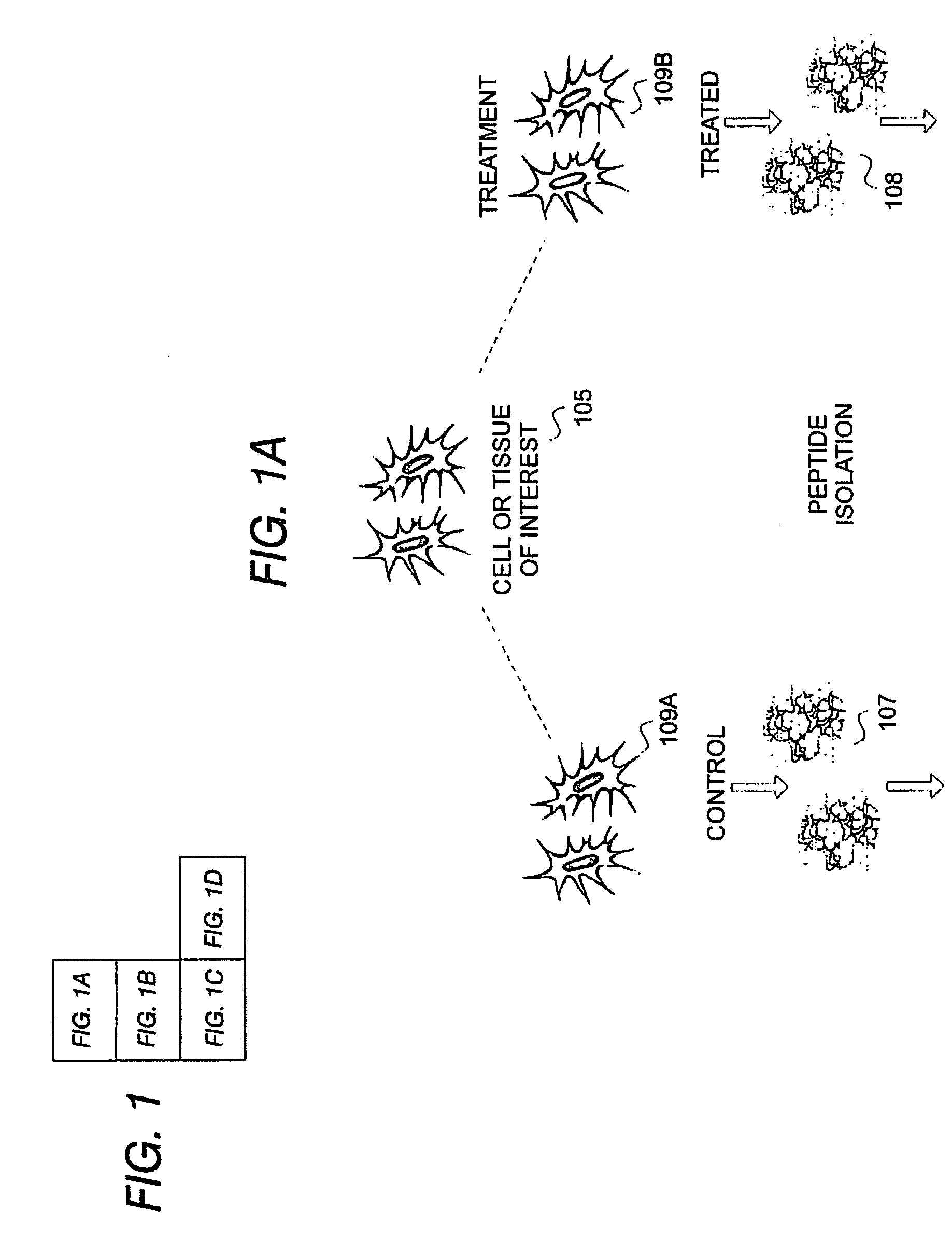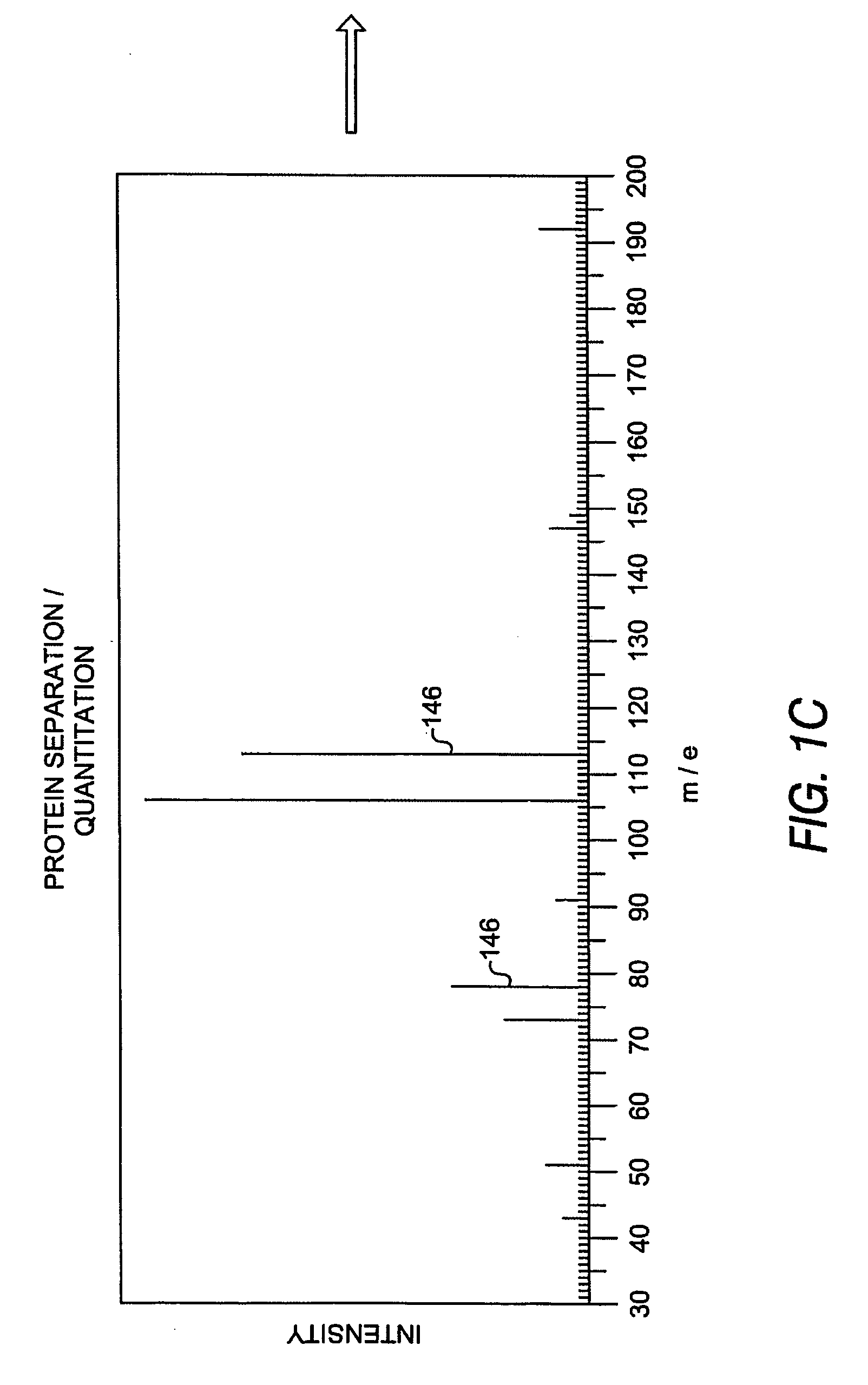System and method of determining proteomic differences
a technology of mass spectrometer and system, applied in the field of automatic calculation of information received from mass spectrometer, can solve the problems of inability to solely depend on the data obtained by these techniques to answer many biological questions, time-consuming process of sequence interpretation, and high labor intensity, so as to reduce variability, rapid and quantitative analysis of peptides, the effect of increasing accuracy
- Summary
- Abstract
- Description
- Claims
- Application Information
AI Technical Summary
Benefits of technology
Problems solved by technology
Method used
Image
Examples
Embodiment Construction
[0038] The system and methods presented herein are useful in identifying protein or peptide components when comparing mixed peptide populations for differential expression. In one embodiment, each population is labeled with an identifiable label or marker to resolve the mixed-population of peptides within the same sample or analysis. The resulting combined analysis provides improved resolution and identification capabilities and is not subject to the degree of instrumental or cross-sample experimental variations which confound conventional peptide identification techniques.
[0039] The peptide identification system further implements an automated sequencing routine in which tandem mass spectra identification resolves protein sequences by querying and correlation against a spectral database of known peptide spectra. This feature significantly improves data acquisition and sequencing throughput and provides a mechanism by which peptides within the mixed-population can be readily identi...
PUM
| Property | Measurement | Unit |
|---|---|---|
| molecular weight | aaaaa | aaaaa |
| molecular weights | aaaaa | aaaaa |
| pH | aaaaa | aaaaa |
Abstract
Description
Claims
Application Information
 Login to View More
Login to View More - R&D
- Intellectual Property
- Life Sciences
- Materials
- Tech Scout
- Unparalleled Data Quality
- Higher Quality Content
- 60% Fewer Hallucinations
Browse by: Latest US Patents, China's latest patents, Technical Efficacy Thesaurus, Application Domain, Technology Topic, Popular Technical Reports.
© 2025 PatSnap. All rights reserved.Legal|Privacy policy|Modern Slavery Act Transparency Statement|Sitemap|About US| Contact US: help@patsnap.com



